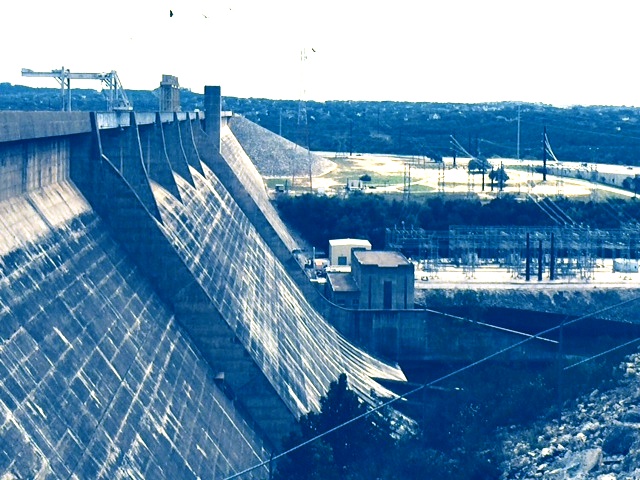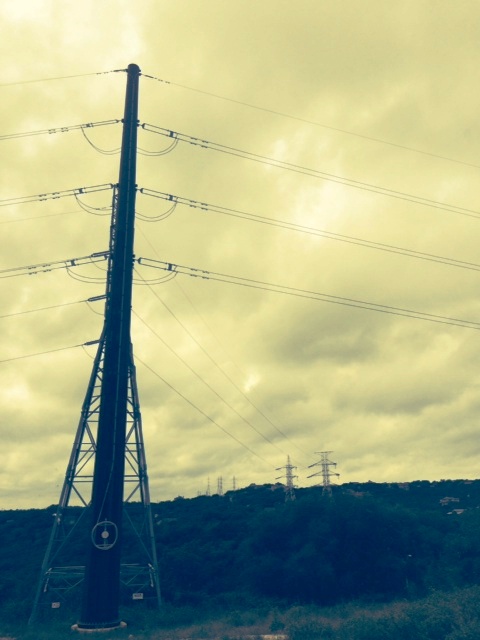Cruising along Ranch Road 620 between Lakeway and Steiner Ranch, you can’t help but notice the majestic Mansfield Dam that holds back the waters of Lake Travis on the northeast side of the highway as you cross the Colorado River.
But if you take a quick glance toward the dam and look all the way down from the bridge to the river bottom, you’ll see a labyrinth of poles and wires that represent one of the primary reasons Lake Travis came into existence — and one of the primary reasons the Greater Austin area continues to flourish.
Some 278 feet below the top of Mansfield Dam sits a hydroelectric generation station that acts as the hub for an intricate web of energized power lines stretching between an army of steel towers rising up from the rolling hills of western Travis County.
That station, when it’s operating at capacity as water released from the dam spins a series of turbines, pulses out 108 megawatts of electricity over those lines. It’s the largest producer of hydroelectricity of the six dams that make up the Highland Lakes chain.
Big deal, you might say. A paltry 100 megawatts or so can only power about 20,000 homes during a sweltering Central Texas summer afternoon.
True enough. But the decision beginning more than 80 years ago to include hydroelectric generation was integral to the securing of permits and funding for not only the Mansfield Dam but for all the other dams in the chain.
Central Texas leaders back then who wanted to tame the Colorado were chiefly concerned about protecting downtown Austin from another flood like the one in 1935 that pushed the river almost to the steps of the Capitol on Congress Avenue.
The legislation that finally created the Lower Colorado River Authority was modeled after the Tennessee Valley Authority that was brought to a region hit hard by the Great Depression. The LCRA would bring the power and stable water supply needed to modernize the ranches and farms of the struggling Texas Hill Country.
By the 1940s and post-war 1950s, the lakes’ recreational appeal became evident. And that proved to be a major catalyst for development. But it’s hard to imagine steady and sustained development that attracts people from all over the country — and even the world — to Central Texas without air conditioning. And you don’t get air conditioning, at least not indoors, without electricity.
Yes, but all of the Highland Lakes together put out less than 300 megawatts on their best day, you say. That’s barely enough power for the 62,000 people living in Cedar Park.
Right again. But by the 1960s, the LCRA’s growing expertise in the generation and transmission of electric power prompted the quasi-governmental entity to begin purchasing fossil-fuel power plants across Central Texas.
As the wind energy boom gathered momentum in the early 21st century, LCRA set up an offshoot corporation to buy that power from both West Texas and the Gulf Coast and to building line towers needed to deliver the electricity back home.
Today, the LCRA is Texas’ largest supplier of renewable power.
So the next time you flip a light switch in your home, watch a ballgame on one of the big-screen TVs at the Oasis, or curse all of the traffic backed up in both directions along Ranch Road 620, think of that non-descript hydroelectric generation station at the base of Mansfield Dam.

